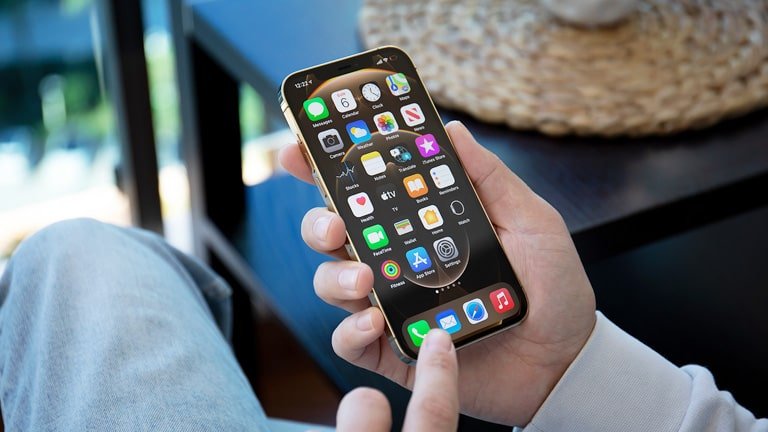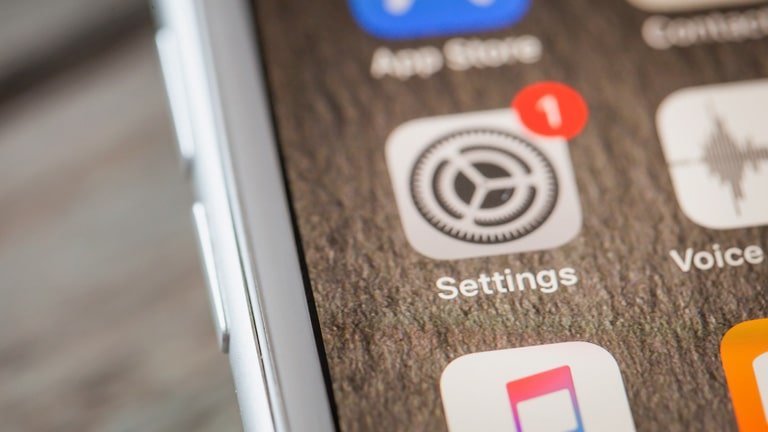
If you are facing mobile connectivity issues on your iPhone, there is a high chance that your iPhone APN settings are incorrect. An Access Point Name (APN) contains all the details your carrier requires to determine if your phone is eligible for its network connection. Setting the wrong information in your APN settings can often lead to network connectivity problems on your iPhone.
If you want to resolve any APN-related issues on your iPhone, this article is for you. In this “iPhone Settings APN” guide, we will take you through the process of viewing and changing your APN settings to ensure they are correctly configured. The guide will be simplified enough for everyone to follow, including those who are new to iPhones. But before we delve into the steps of viewing and changing your APN settings, let’s go through some basics.
What is an APN, and what is its role?
APN stands for Access Point Name and refers to the specific network parameters used by mobile devices, iPhones, to connect to mobile internet and other mobile network services provided by a carrier. Your APN acts as a gateway between your device and the carrier’s network infrastructure, allowing data to be transmitted and received over a mobile network.
When you request to access the internet or use data-dependent services (such as sending MMS messages or using mobile apps that require internet connectivity), your device communicates with the carrier’s network using the designated APN. This way, the carrier knows how to handle your data traffic and direct it appropriately. That is why having the wrong APN settings often leads to connectivity issues.
When should you consider changing APN settings manually?
Your iPhone will usually automatically configure APN settings once you install eSIM or a physical SIM card. However, there are typical situations where you may have to change these settings manually. Some of these situations include the following;
- When you switch to a new mobile network provider: If you change your mobile carrier, your device may sometimes not automatically change the APN settings. So, you will need to manually configure the settings with the new carrier’s specific APN settings to connect to their network.
- Using a new SIM card: This often happens to travelers. When you insert a new SIM card or eSIM into your device, especially from a different carrier than the one you were using previously, you may need to update the APN settings.
- Resolving data connection issues: We already stated that network issues can sometimes be caused by inaccurate APN settings. If you experience data connectivity problems, such as being unable to access the internet or using mobile data services, manually changing the APN settings can sometimes resolve the issue.
- Using an unlocked device: If you have an unlocked device (not tied to any specific carrier), your iPhone may sometimes not configure the APN settings automatically, so you will have to configure them manually.
- When you reset your network settings: After resetting your device’s network settings, your APN settings will also be erased, requiring you to input them manually.
What happens when APN is not set correctly?
When the APN is not set correctly on your device, it can lead to various connectivity issues and affect your ability to use certain services. These are some of the common signs that your APN is not correctly set.
- No Internet Access: With the wrong APN, your device will likely not connect to your carrier’s mobile network, resulting in no Internet access.
- Slow Data Speeds: Incorrect APN settings can lead to slower data speeds or unstable connectivity, making browsing the web and streaming frustratingly slow.
- Inability to Send MMS: With the wrong APN settings, your Multimedia Messaging Service may not work correctly.
- Roaming Issues: When you travel to another country, your device will need the appropriate APN settings to connect to a foreign carrier’s network for roaming. Wrong settings will affect your ability to connect to their network.
- Data Billing Problems: If you have the wrong APN settings, your device may not be properly recognized by your carrier’s network, leading to billing problems.
What is the difference between APN and VPN?
It is quite common for some people to use the terms “VPN” and “APN” interchangeably. However, it’s essential to understand that APN and VPN (Virtual Private Network) are distinct concepts that serve different purposes. Let’s delve into their differences.
As previously mentioned, APN is a network parameter utilized by mobile devices to connect to a specific mobile carrier’s network and access data services, such as the Internet. For instance, if you have an AT&T eSIM in your device, you need to have the correct AT&T APN settings to access their network. The APN acts as a gateway and provides the necessary configurations for your device to communicate with your carrier’s network infrastructure.
On the other hand, a VPN is a mechanism that establishes a secure and encrypted connection between your device and a remote server on the Internet. The primary reason for using a VPN is to enhance online privacy and security. It achieves this by encrypting your internet traffic and routing it through the VPN server, making it difficult for anyone, including your service provider, to track your browsing activities.
What are the common APN settings on iPhones?
The common APN settings on iPhones that you can change include the following.
- APN: As stated earlier, the Access Point Name (APN) acts as the gateway for data connectivity.
- Username and Password: Some carriers may require a username and password to authenticate your device on their network.
- APN Type: You can choose from different APN types, such as Supl (Secure User Plane Location), mms, wap and generic.
- MMSC (Multimedia Messaging Service Center): This is the URL for the carrier’s MMS service.
- Proxy: The proxy is the server that acts as the intermediary between your device and the internet.

How to change APN settings on iPhone?
At this point, you have learnt about the role of APN settings and the most common APN settings on iPhones. It is important to note that the details of the APN settings should be obtained from your carrier. So, before proceeding to the next step, contact your mobile carrier to get these details.
View your iPhone APN Settings
To view your iPhone’s APN settings, follow the steps below;
- Open your iPhone’s “Settings” app.
- Scroll down and tap on “Cellular”, “Mobile Data”, or Mobile Service (the wording may vary depending on your iOS version and region).
- Tap on “Cellular Data Network” or “Mobile Data Network” (again, the phrasing can differ based on the iOS version and carrier).
- You will find the APN settings for your carrier in this section.
Edit and Change iPhone APN Settings
After viewing your APN settings, you can change them using the following steps;
- While in your APN Settings, input the information provided by your carrier. Carefully enter the correct details in the relevant fields, including APN, Username, Password, MMSC, MMS Proxy, MMS Max Message Size, MCC, MNC, and Authentication Type.
- After inputting the above settings, save the changes by tapping the “Back” button or swiping back, and your new APN settings should be active.
Reset iPhone APN Settings
If you’re having issues with your network, you may choose to reset your APN settings and input new ones. Please follow the steps below to reset these settings.
- Launch the “Settings” app on your iPhone.
- Tap “Mobile” or “Cellular” > “Mobile Data Network” or “Cellular Data Network”
- Tap “Reset Settings.”
Final thoughts
As mentioned earlier, having the correct APN settings is crucial for connecting to your carrier’s mobile network. In this article, we have provided comprehensive information about iPhone APN settings, including how to view and modify them if needed. Before you proceed with any changes, ensure that you obtain the accurate APN settings from your carrier. You can easily find this information on their website or by contacting their support.
If you face any problems while attempting to change your APN settings, feel free to reach out to online eSIM experts like eSIM USA. These support teams are well-informed about APN settings and can assist you with any network and eSIM-related concerns. Additionally, if you need the best eSIM mobile data plans for your travels to the US, they are here to help you with that as well.
Frequently Asked Questions about iPhone APN Settings
Some of the common questions about iPhone APN settings include the following;
How do I set up APN on iPhone?
To set up an APN on your iPhone, contact your mobile carrier to get the correct APN details from your carrier. You should then input these details by going to “Settings” > “Cellular” or “Mobile Data.” Tap on “Cellular Data Network” or “Mobile Data Network” to open the APN settings page where you can make changes.
How do I set my APN settings?
To set your APN settings on your iPhone, “Cellular” or “Mobile Data” section in the Settings app and access the “Cellular Data Network” or “Mobile Data Network” page. There you will find the APN Setting section, where you can enter the correct APN details provided by your carrier.
What is APN on my phone?
APN stands for Access Point Name, and it refers to the network details used by your device to connect to a carrier’s network and access data services, including internet browsing and MMS.
What is the APN of LTE?
The APN settings for LTE (Long-Term Evolution) are specific to each carrier and are necessary for connecting to their LTE network. They are similar to the APN settings for accessing other network standards, including 5G and 3G.
Which APN type is best?
The best APN type depends on your mobile carrier and the services they offer. So, you will need to contact your career to determine the APN type that they prefer. But most of the time, the default APN type (generic) is what most carriers use.
How do I set up cellular data on my iPhone?
To set cellular or mobile data on your iPhone, insert a physical SIM card or activate an eSIM. After your SIM is detected, enable Cellular Data or Mobile Data by going to “Settings” > “Cellular” or “Mobile Data” (depending on your iOS version and region), then toggle on “Cellular Data” or “Mobile Data.”
If you are travelling abroad and want to use the data services of your home carrier, ensure that “Data Roaming” is enabled under the “Cellular Data Options” section. However, it is important to remember that roaming can be very expensive, which may lead to incurring costly data charges.
